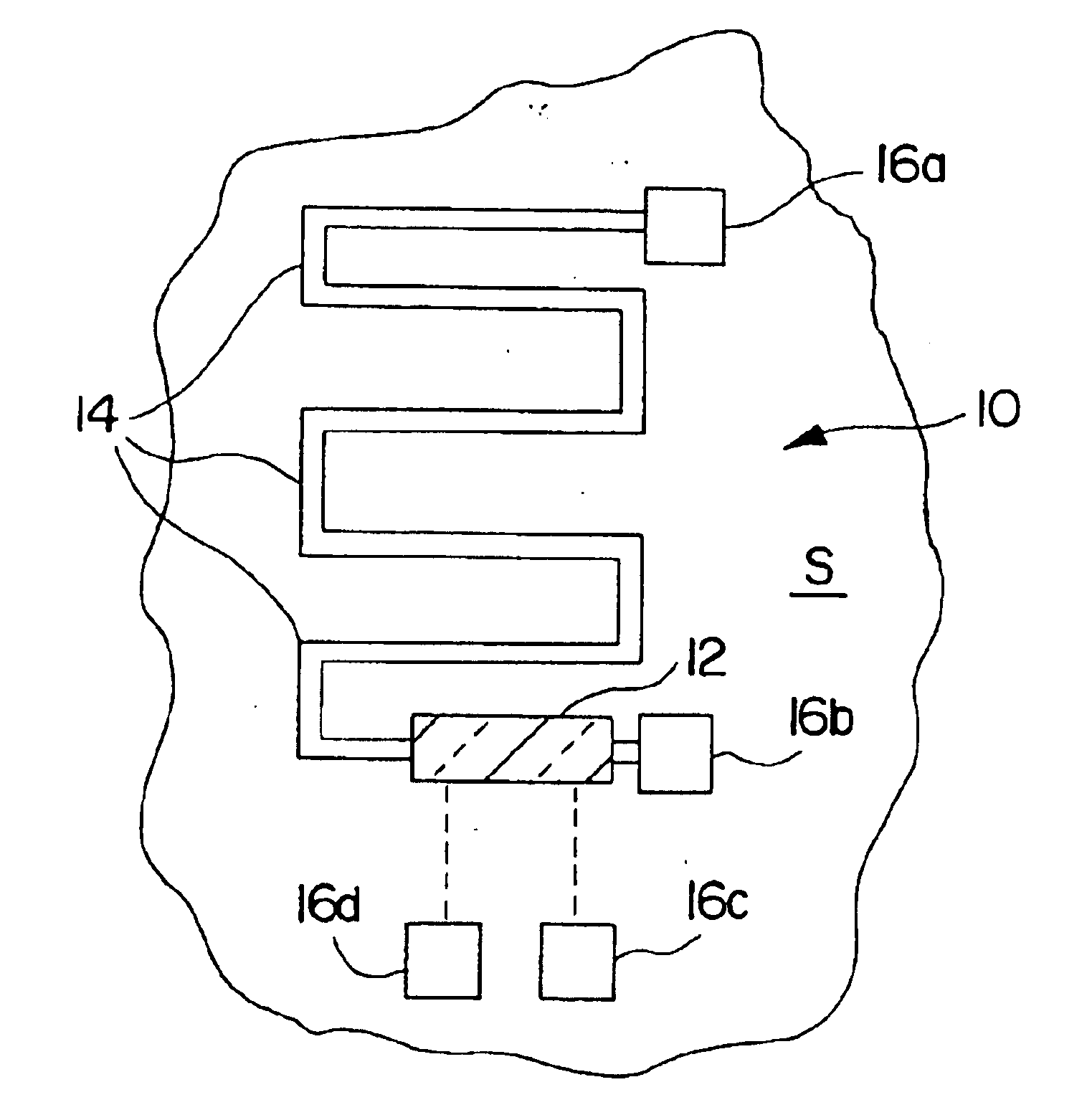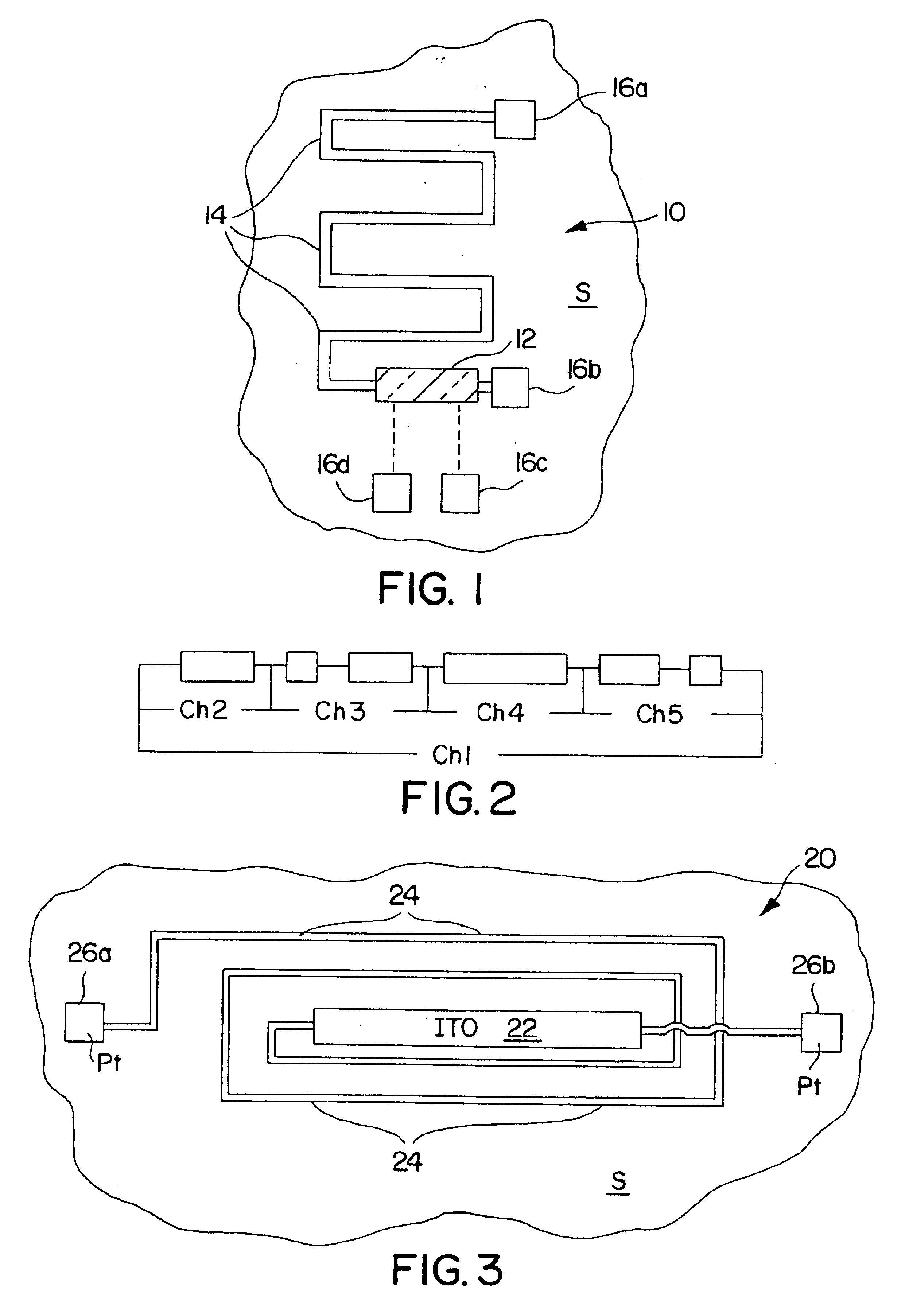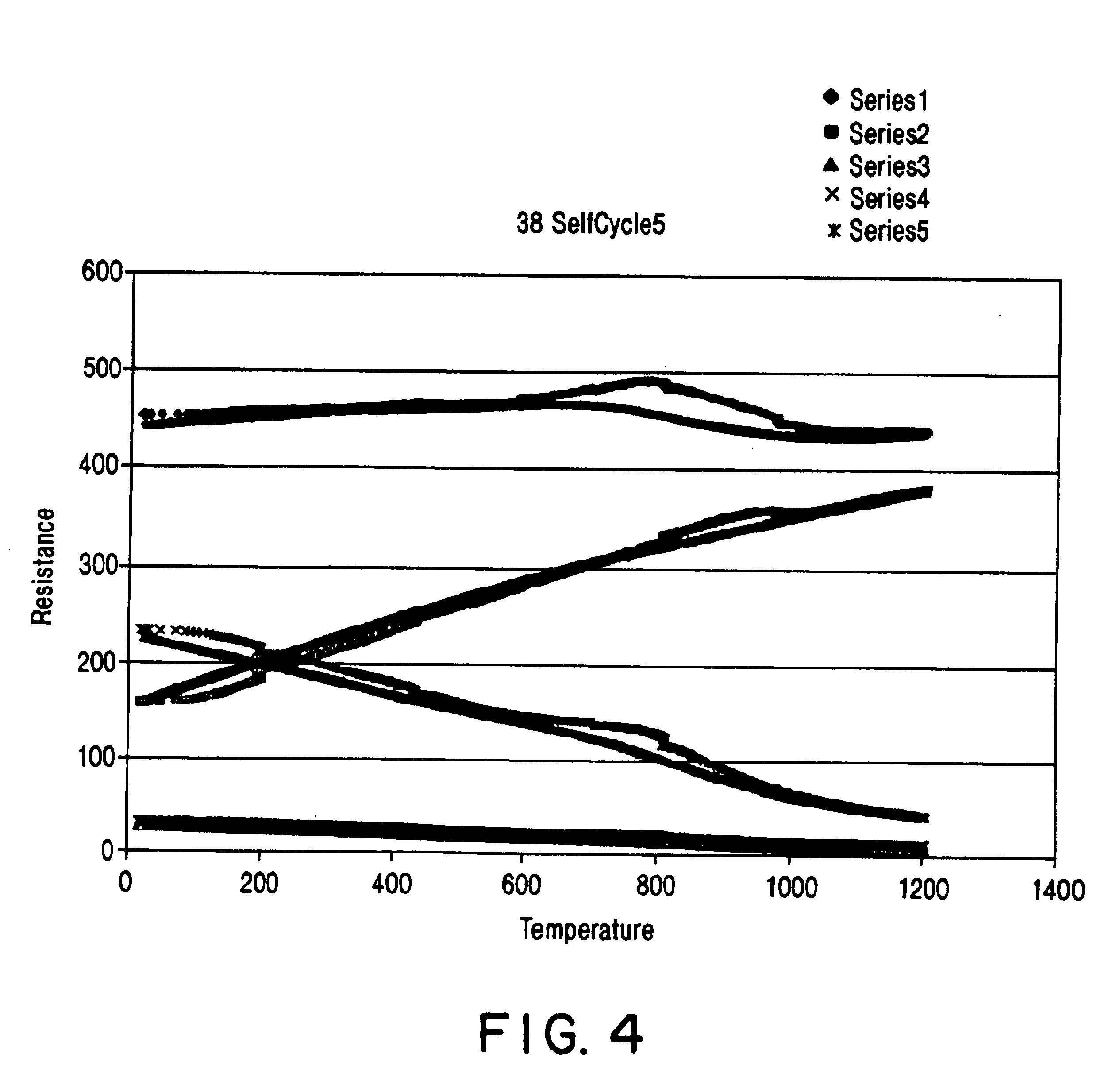Self-compensated ceramic strain gage for use at high temperatures
a strain gage and ceramic technology, applied in the direction of instruments, mechanical measuring arrangements, liquid/fluent solid measurements, etc., can solve the problems of limited scope of strain gage, limited use of strain gage alone, and relatively high tcrs
- Summary
- Abstract
- Description
- Claims
- Application Information
AI Technical Summary
Benefits of technology
Problems solved by technology
Method used
Image
Examples
example
In the example, a four-wire method was used connecting to the bond pads 16. This method is well known to one skilled in the art. The sensor was fabricated and tested as outlined in the sections above. Four cycles of heating and cooling were measured, the results are shown below and in FIG. 4. After the first heating, the resistance changing with temperature is almost identical in four cycles, thus it shows the reproducibility is good.
TCR.sub.COMP =(R.sub.COMP,f -R.sub.COMP,0) / (R.sub.COMP,0 *.DELTA.T)=(437-442 / (437*1170)=-9.8(ppm / .degree. C.)
TCR.sub.Pt =(R.sub.Pt,f -R.sub.Pt,0) / (R.sub.Pt,0 *.DELTA.T)=(379-160) / (160*1170)=+1169(ppm / .degree. C.)
TCR.sub.ITO =(R.sub.ITO,f -R.sub.ITO,0) / (R.sub.ITO,0 *.DELTA.T)=(40-225) / (225*1170)=-702(ppm / .degree. C.)
Resistivity of Pt
At 30.degree. C.,
.rho..sub.Pt,0 =R.sub.Pt,0 *(w*t) / L=160*(0.6 mm*0.8.times.10.sup.-3) / 500=1.535.times.10.sup.-4 (.OMEGA.*m)
At 1200.degree. C.,
.rho..sub.Pt,f =R.sub.Pt,f *(w*t) / L=379*(0.6*0.8.times.10.sup.-3) / 500=3.639.times.1...
PUM
| Property | Measurement | Unit |
|---|---|---|
| thickness | aaaaa | aaaaa |
| thickness | aaaaa | aaaaa |
| diameter | aaaaa | aaaaa |
Abstract
Description
Claims
Application Information
 Login to View More
Login to View More - R&D
- Intellectual Property
- Life Sciences
- Materials
- Tech Scout
- Unparalleled Data Quality
- Higher Quality Content
- 60% Fewer Hallucinations
Browse by: Latest US Patents, China's latest patents, Technical Efficacy Thesaurus, Application Domain, Technology Topic, Popular Technical Reports.
© 2025 PatSnap. All rights reserved.Legal|Privacy policy|Modern Slavery Act Transparency Statement|Sitemap|About US| Contact US: help@patsnap.com



